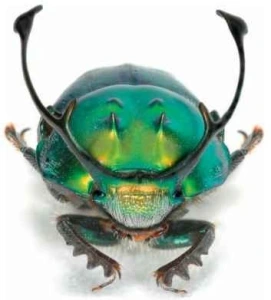Agriculture News
WKU entomologist tracing ancestry of dung beetles
- Tuesday, April 19th, 2016
One of the largest and most important groups of dung beetles in the world evolved from a single common ancestor and relationships among the various lineages are now known, according to new research by an entomologist from WKU.

Dr. T. Keith Philips in the De Hoop Nature Preserve, West Cape Province, South Africa. (Photo by Linda Gerofsky)
The study by WKU Biology Professor T. Keith Philips, recently published in the open access journal, Zookeys, is providing important insights into the evolution and diversity of this group of dung beetles, which make up about half of the world’s dung beetle species.
The two tribes studied, the onthophagines and oniticellines, evolved from a single common ancestor and are found worldwide, except for Antarctica. These dung beetles make up the vast majority of species and dung beetle biomass in many ecosystems, feeding on mammal dung. Often thought of as nature’s garbage collectors, the important ecosystem service offered by the dung beetle helps recycle nutrients, reduce parasites, and can even help seeds germinate.
Dung beetles are well known to many people because they are colorful species, active in the daytime. Additionally, many species have unusual behaviors, such as making and rolling balls of dung away from a dung pile.
While the two tribes studied do not have species that create balls, they instead have evolved many other diverse behaviors. This includes species that do not feed on dung but specialize on fungi, carrion and dead millipedes.
Many species that evolved from the same common ancestor even live in close association with termites and ants, where they may be feeding on nest debris. Philips notes, “This is one of the most important groups of dung beetles that finally has a hypothesis on how they evolved and diversified on earth. The evolutionary scenario can now be tested and refined in the future with more data.”
Although relatively well known, this group still may have as many as 1,000 undiscovered species left for scientists to document.
Contact: Keith Philips, (270) 745-3419
Some of the links on this page may require additional software to view.


